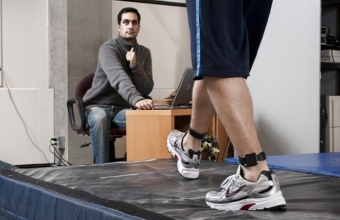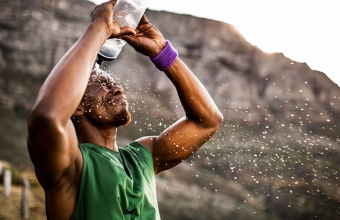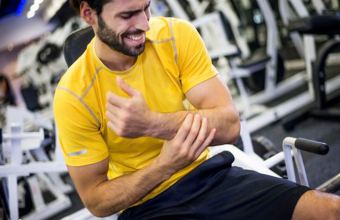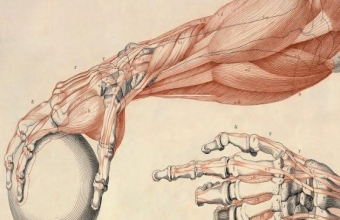Back injuries
Back injuries are rare injuries, but they may cause a spinal cord injury and are very dangerous, and a back injury may cause loss of feeling, numbness and weakness in the lower extremities, and some severe back injuries cause nerve damage, so you need special medical care.
General causes of back injuries
Weakness of the muscles of the back, abdomen, and hip is a major cause of most back problems
Lack of back flexibility, especially in the posterior muscles of the thigh and the muscles of the hip joint.
Lack of balance in strength and flexibility in opposing muscles and participation in exertion.
Classification of back injuries
First - acute back injuries:
It occurs as a result of falling, direct and indirect strikes, collision with tools and devices, or the performance of violent movements in various sports, including trauma, fractures, strains and tears.
Second - Overuse injuries:
It occurs as a result of frequent low stress such as excessive bending back and forth, as well as anatomical deformities, wrong postures, normal muscle weakness, and atrophies associated with aging, as well as inactive people may suffer from lower back pain and athletes suffer due to stress.
First - acute back injuries:
Back trauma (bruises):
Injury to the thoracic and lumbar vertebrae occurs rarely, and back bruises are often the result of a direct blow and the back is exposed to trauma due to the capacity of its surface and occurs when direct collision and friction between players, which causes bleeding in muscle fibers, and occurs in games that cause falls or collision with equipment and devices.
the reasons :
Direct shock.
Symptoms and complications:
Localized pain with tenderness and swelling.
- Color Change.
A complication of acute trauma is bleeding and swelling, which causes tightening during circulation or narrowing of the spinal cord and nerves.
Soft tissue injuries of the spine:
It often occurs as a result of rotational movements and a sudden change of speed, which leads to a rupture of muscles and ligaments, especially in the lower back, as well as injury to the lumbosacral joint, which connects the pelvis to the spine, is also prone to acute injury to rupture of ligaments and muscles, causing pain in the lumbar region.
Spinal ligament tears:
It occurs during bending and overstretching and occurs rarely in gymnastics, weightlifting, diving, and trampoline, especially when exerting more effort than normal and may be accompanied by various fractures.
Back muscle stretch and tear and back ligament sprain:
It is an extension or tear in one or more of the ligaments and muscles of the back, and the injury occurs when severe twisting and rotation or any rapid movement, and football and ice hockey players are exposed to this injury.
Tension and rupture occurs in the tissues and muscles of the lumbar and sacral region in weightlifting and gymnastics and is accompanied by local muscle contraction with an abnormal position of the spine and loss of normal physiological flexibility.
the reasons :
Sharp rotation in the back.
Excessive effort on the muscles during bending or lifting movements.
Symptoms and complications:
Sudden tightening and severe pain in the back, and the pain intensifies within 2-3 hours of the injury.
Local pain, tenderness and swelling in the affected area, then the pain radiates down the buttocks and to the legs, or direct pain on the bony prominences in the spine.
And its complications in the case of acute injury or twisting of the ligament, which causes damage to the spinal cord when the effect is concentrated in the spine.
When not treated well in cases of moderate and severe sprains and strains, the injury recurs and causes chronic lower back pain.
Fractures of the thoracic (dorsal) vertebrae:
Fractures of the dorsal vertebrae occur in its upper and lower parts in football, equestrian, and motor racing, as well as games that involve high and severe pressure on those vertebrae with an axial winding.
The presence of peripheral bony appendages of the dorsal vertebrae from the fourth to the eighth paragraphs provides relative protection for these vertebrae.
Fractures of the transverse aponeurosis:
It occurs when falling into equestrian and also occurs due to the violent contraction of the muscles and as a result of the violence associated with this injury, the kidneys can be injured.
Second - chronic back injuries (overuse injuries):
It includes intervertebral tissue injuries (cartilage) such as (slipped disc, protruding cartilage, rupture of the cartilage) and is common in athletes.
The cartilages in the lower back are exposed to high pressure during daily activities and in sports, especially in gymnastics and weightlifting, and they may cause pressure on nerves and the sufferer often feels pain in the buttocks and legs when a herniated disc.
This effect appears clearly in later years of life and may lead to joint inflammation between the dorsal vertebrae and the occurrence of anterior curvature for the elderly, which negatively affects their physical fitness.
Athletes are generally exposed to this injury, given that it affects athletes over the age of ((20 years), and a herniated disc occurs between the vertebrae, especially the fifth lumbar and often the coccyx bone.
the reasons :
Gradual atrophy occurs cracks in the cartilage structure, which leads to the leakage of the material in its center, causing pressure on the nerve root, although cartilage atrophy occurs gradually, but one movement may lead to pushing part of the cartilage out, causing pressure on the nerve root
Symptoms:
- Nervous disorders with lower back pain reflected in the limbs with paresthesia and numbness that moves from the bottom of the buttocks to the leg, and in severe cases it reaches the little toe.
Muscle weakness in the affected limb and leg.
The pain increases with stress and coughing.
- When the lumbar region is injured, the inability to extend the leg towards the injury, and cartilage atrophy may cause chronic pain in the lower back.
 Arabic
Arabic
 English
English







Comments